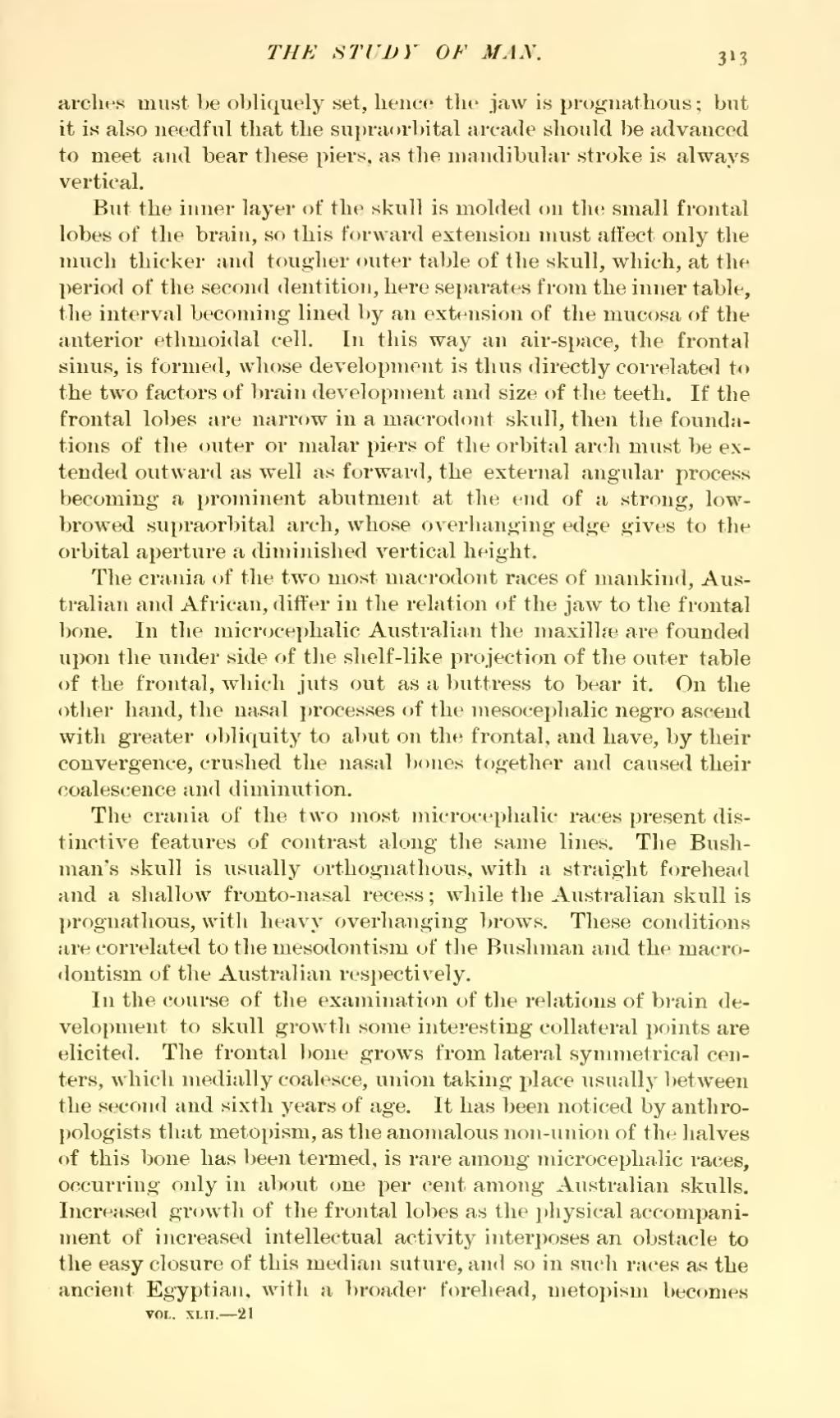arches must be obliquely set, hence the jaw is prognathous; but it is also needful that the supraorbital arcade should be advanced to meet and bear these piers, as the mandibular stroke is always vertical.
But the inner layer of the skull is molded on the small frontal lobes of the brain, so this forward extension must affect only the much thicker and tougher outer table of the skull, which, at the period of the second dentition, here separates from the inner table, the interval becoming lined by an extension of the mucosa of the anterior ethmoidal cell. In this way an air-space, the frontal sinus, is formed, whose development is thus directly correlated to the two factors of brain development and size of the teeth. If the frontal lobes are narrow in a macrodont skull, then the foundations of the outer or malar piers of the orbital arch must be extended outward as well as forward, the external angular process becoming a prominent abutment at the end of a strong, low-browed supraorbital arch, whose overhanging edge gives to the orbital aperture a diminished vertical height.
The crania of the two most macrodont races of mankind, Australian and African, differ in the relation of the jaw to the frontal bone. In the microcephalic Australian the maxillæ are founded upon the under side of the shelf-like projection of the outer table of the frontal, which juts out as a buttress to bear it. On the other hand, the nasal processes of the mesocephalic negro ascend with greater obliquity to abut on the frontal, and have, by their convergence, crushed the nasal bones together and caused their coalescence and diminution.
The crania of the two most microcephalic races present distinctive features of contrast along the same lines. The Bushman's skull is usually orthognathous, with a straight forehead and a shallow fronto-nasal recess; while the Australian skull is prognathous, with heavy overhanging brows. These conditions are correlated to the mesodontism of the Bushman and the macrodontism of the Australian respectively.
In the course of the examination of the relations of brain development to skull growth some interesting collateral points are elicited. The frontal bone grows from lateral symmetrical centers, which medially coalesce, union taking place usually between the second and sixth years of age. It has been noticed by anthropologists that metopism, as the anomalous non-union of the halves of this bone has been termed, is rare among microcephalic races, occurring only in about one per cent among Australian skulls. Increased growth of the frontal lobes as the physical accompaniment of increased intellectual activity interposes an obstacle to the easy closure of this median suture, and so in such races as the ancient Egyptian, with a broader forehead, metopism becomes

